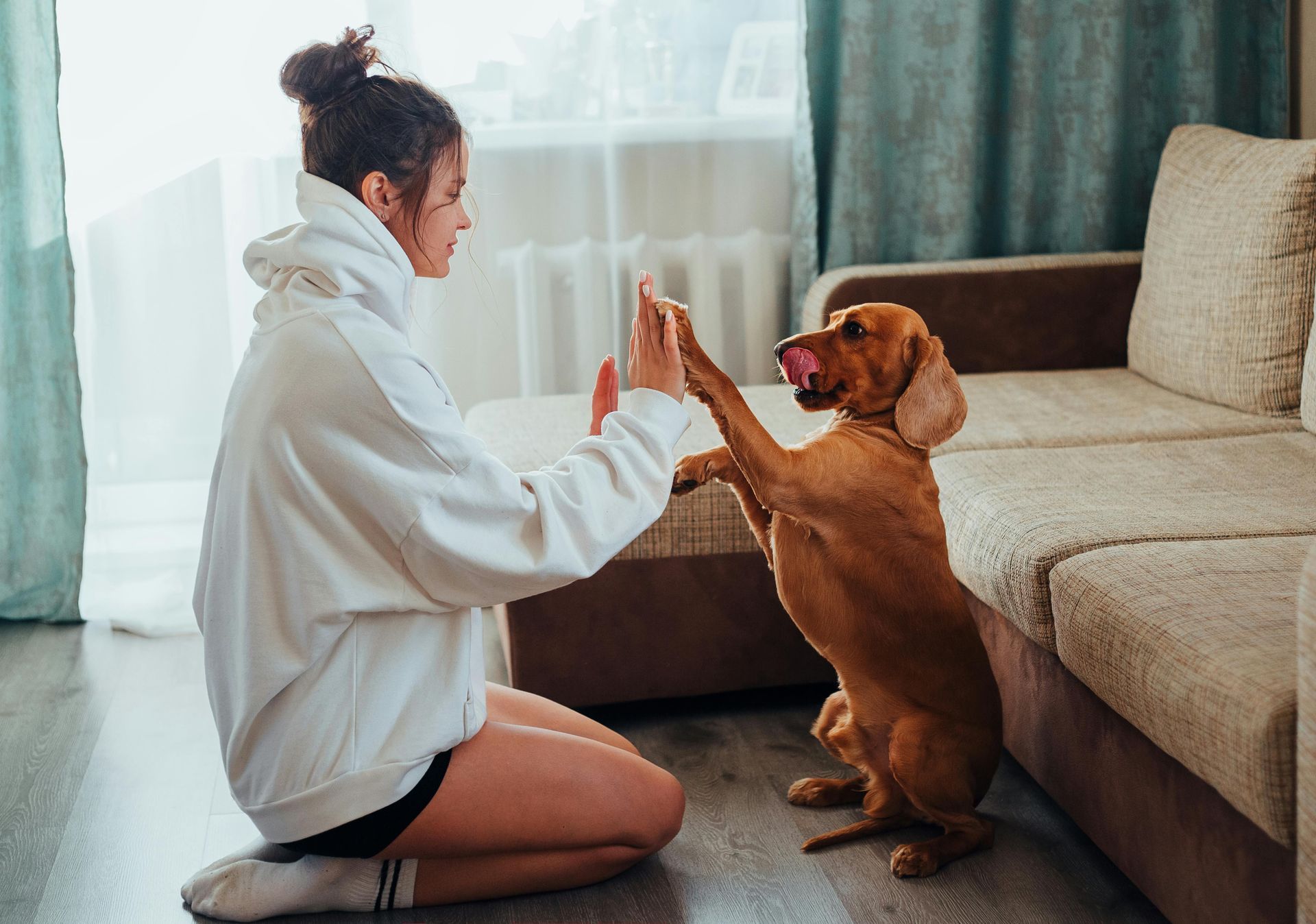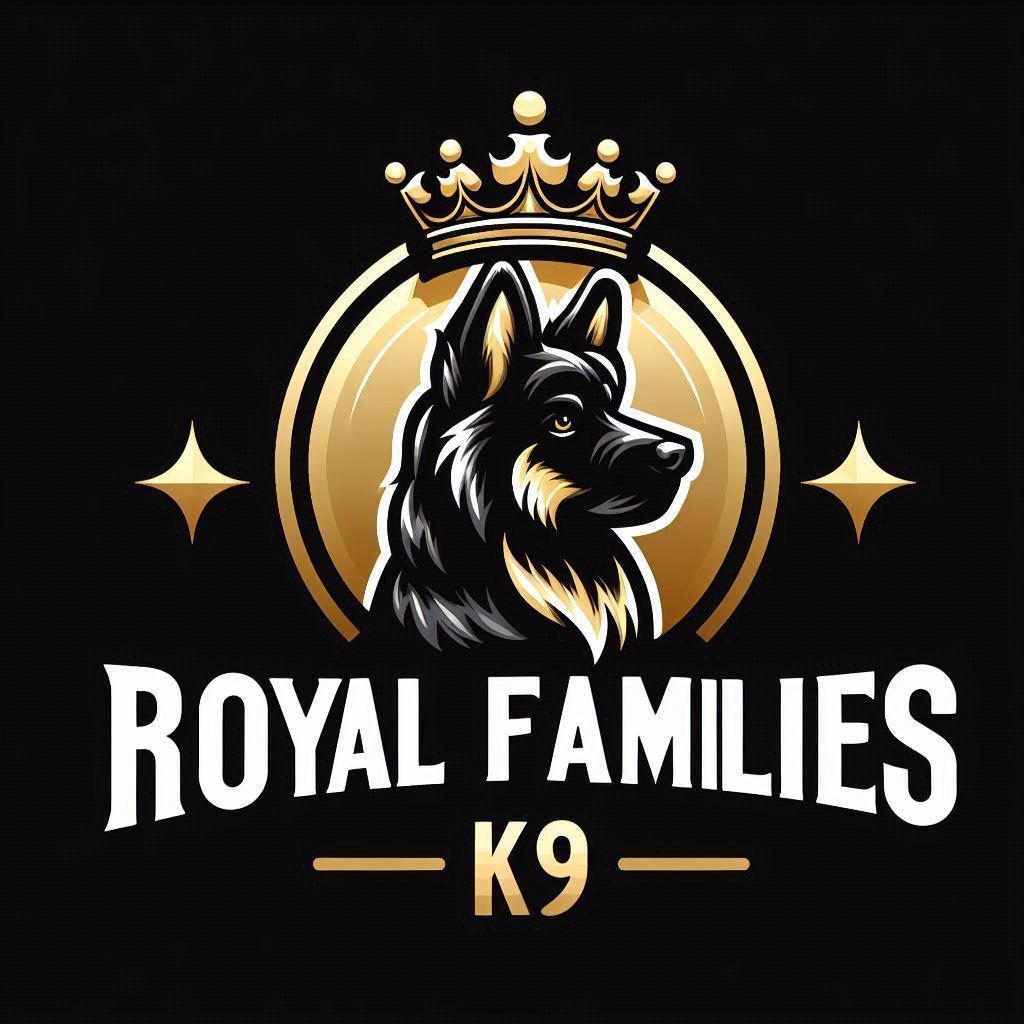Royal Library
Training Your Dog with Nonverbal Cues

Research shows that dogs respond better to nonverbal cues than verbal ones. Dogs communicate primarily through body language, which means we need to use a language they understand to effectively communicate with them.
Key Points
- Body Language: Dogs use their bodies to communicate and understand nonverbal cues more effectively.
- Immediate Training: Begin training as soon as you bring a new puppy home to avoid common behavioral issues, and incorporate body language basics to strengthen communication and understanding with your puppy. For example:
- Sit Cue: Use a hand signal by raising your hand palm up as you say “sit.”
- Stay Cue: Extend your hand palm outwards like a stop sign when teaching “stay.”
- Come Cue: Squat down and open your arms wide while calling “come.”
- Down Cue: Point your finger towards the ground as you say “down.”
- Behavioral Problems: Common issues like barking, home soiling, leash pulling, not coming when called, jumping up on people, and chasing other animals can be addressed with clear rules and consistent training.
Use Clear Body Language
- Hand Signals: Teach your dog basic commands using hand signals, such as sit, stay, come, and down. Consistency in your gestures is key.
- Posture and Movement: Dogs are very intuitive to human body language. Stand tall and confident to assert leadership. Use intentional and calm movements to guide your dog.
Establish Eye Contact
- Attention: Encourage your dog to make eye contact with you. This builds trust and helps in getting their attention.
- Focus: Use treats or toys to guide your dog’s gaze towards you when communicating a command.
Positive Reinforcement
- Rewards: Use treats, toys, and praise to reward your dog for following commands correctly. Vary the types of rewards to keep them motivated.
- Timing: Reward immediately after the desired behavior to reinforce the action. This helps your dog understand which behavior is being rewarded.
Consistent Training
- Routine: Establish a consistent daily routine for training sessions. Dogs thrive on predictability, which helps in reinforcing good behavior.
- Short Sessions: Keep training sessions short but frequent to maintain your dog’s interest and prevent fatigue.
Set Clear Rules and Boundaries
- House Rules: Set clear rules for your dog regarding acceptable behavior indoors and outdoors. Consistency from all family members is crucial.
- Boundaries: Use baby gates or designated areas to set physical boundaries within your home.
Addressing Common Behavioral Problems
Barking
- Identify Triggers: Determine what causes your dog to bark and address those triggers. It could be strangers, other dogs, or specific noises.
- Training Commands: Teach your dog commands like “quiet” or “stop” and reward them for following the command.
Home Soiling
- House Training: Establish a regular potty schedule and take your dog outside frequently, especially after meals and naps.
- Positive Reinforcement: Reward your dog immediately after they eliminate outside to reinforce the desired behavior.
Leash Pulling
- Loose Leash Training: Teach your dog to walk on a loose leash by stopping whenever they start pulling and rewarding them when they stay close to you.
- Practice: Consistently practice walking on a leash in different environments to help your dog adapt.
Not Coming When Called
- Reliable Recall: Train your dog to come when called using high-value rewards and positive reinforcement. Start in a distraction-free environment and gradually introduce distractions.
- Games: Play recall games like “find me” or “round robin” to make recall training fun.
Jumping Up on People
- Ignore Jumping: Turn away and ignore your dog when they jump up. Only give attention when they have all four paws on the ground.
- Teach Alternative Behaviors: Train your dog to sit or stay when greeting people.
Chewing and Nipping
- Provide Chew Toys: Ensure your dog has plenty of chew toys to satisfy their natural urge to chew.
- Redirect Behavior: Redirect inappropriate chewing to acceptable items and reward them when they choose the correct object.
Overexcitement and Hyperactivity
- Calm Environment: Create a calm and structured environment for your dog. Use calm and soothing tones when interacting with them.
- Exercise and Mental Stimulation: Ensure your dog gets plenty of physical exercise and mental stimulation through activities like walking, playing, and training.
Running Out the Door
- Door Safety: Teach your dog to wait at the door before going out. Use commands like “wait” or “stay” and reward them for compliance.
- Practice: Consistently practice door safety to reinforce the behavior.
By implementing these strategies, you can effectively communicate with your dogs, address behavioral issues, and build a stronger, more positive relationship with your furry companions. 🐾



